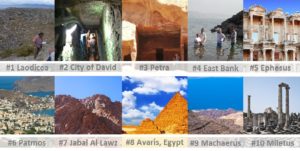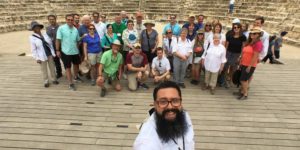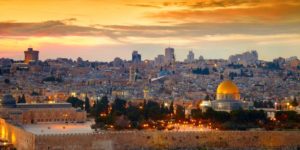Top 7 Sites to Visit in Rome for the Christian Traveler
By Jennifer Bartlett
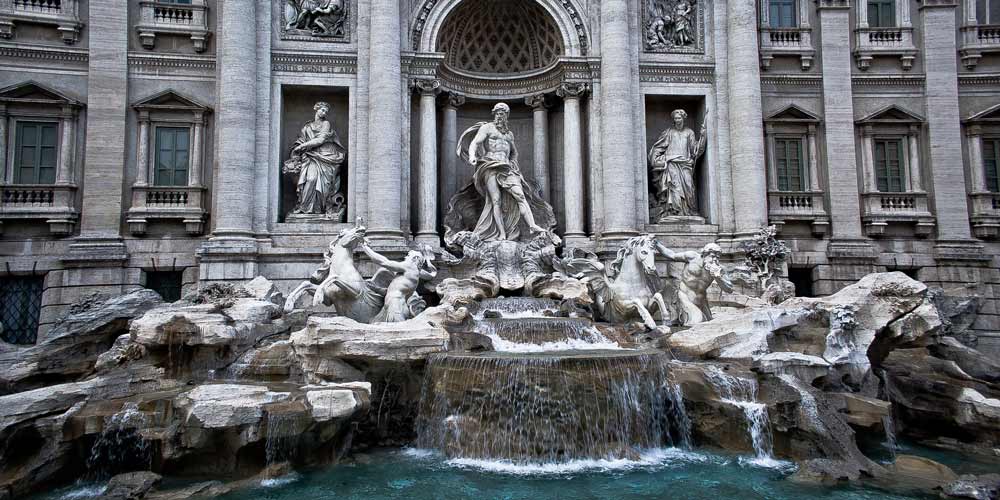
There are Many Sites to Visit in Rome for Christian Travelers, Here is a List of Some of Our Favorites:
A Christian tour of Rome with Living Passages is a unique way to see one of the Mediterranean’s most popular travel destinations. Rome flaunts a rich history that stretches from the 9th century BC to the flourishing present. Our guests will have the opportunity to visit many of Rome’s enduring monuments with the added insight borne of a biblical perspective. Here are our Top 7 Sites to Visit in Rome that you can experience for yourself on one of our enthralling tours:
1. The Colosseum
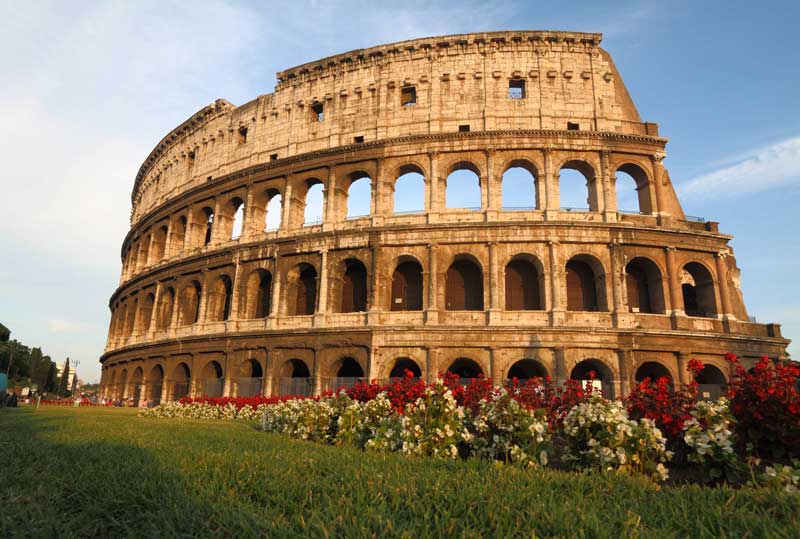
The Colosseum, or Flavian Amphitheatre, is a huge arena in the heart of Rome constructed around 72 AD. It was built of limestone, volcanic rock, and brick-faced concrete, and it held between 50,000 and 80,000 spectators. It is located at the site of a drained lake that was once on the grounds of Nero’s Golden House. It was Vespasian who chose to replace Nero’s private lake with this colossal public structure, and his son Titus completed it in 80 AD. A hidden inscription alludes to the unfortunate source of funding for the arena, which is alluded to in another site of interest, the Arch of Titus (see below). Vespasian’s other son Domitian later made further modifications to the Colosseum. These three emperors comprise the Flavian Dynasty, for which the amphitheater was named.
Early church martyrs survive in the documents that describe their deaths under Trajan and later emperors in this fierce oval battleground. Because so many Christians were persecuted to the death for their faith here, a cross now stands where the condemning emperors once sat: a picture of the judgment that awaits those who once judged Christ’s own.
2. The Palatine

Palatine Hill, or Monte Palatino, is a plateau 168 feet (51 metres) above sea level on which the city of Rome was founded. Here lie vestiges of three temples and the palaces of a handful of Roman emperors, such as Tiberius, Septimius Severus, and Domitian, as well as Augustus, whose house was respected by his successors and spared from the fires that raged through Rome1. Obscured by the Domus Livia, the wife of Augustus, is a cave called the Lupercal, where, legend has it, the twins Romulus and Remus were nursed by the she-wolf Lupa years before their founding of the noble city.
Samuel Ball Platner and Thomas Ashby, “Palatinus,” A Topographical Dictionary of Ancient Rome (London: Oxford University Press, 1929), p. 374.
3. The Roman Forum
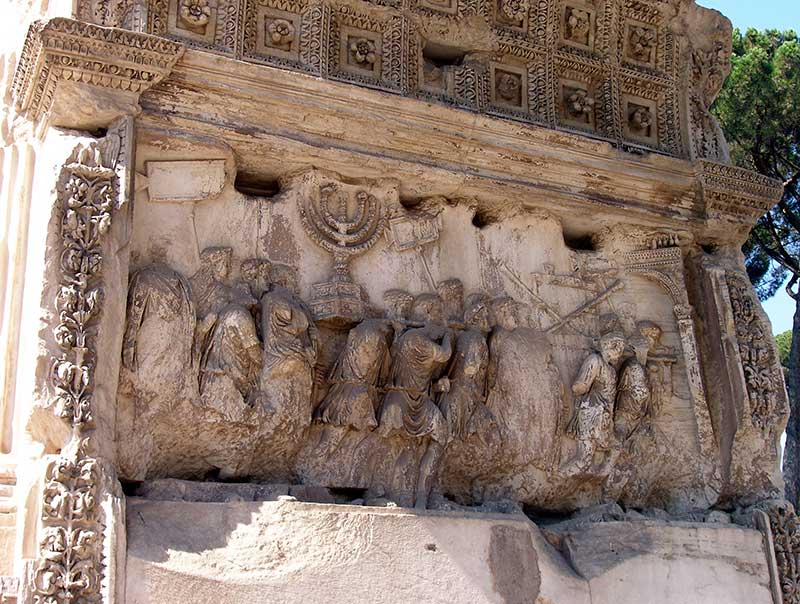
The Roman Forum is a rectangular plaza in the center of Rome, which was originally a marketplace, but because it was a public venue, it came to be used for speeches, public processions, criminal trials, and the like. The Forum features a potpourri of architectural styles and building materials in its weathered ruins. Important buildings, statues and monuments were located here, such as the Senate House, or Curia, and the Arches of Septimius Severus and Titus, as well as domes, baths, and several temples.
The Arch of Titus was built in 81 AD by Domitian to commemorate the victory of his younger brother Titus over Jerusalem during the Jewish revolt of 70 AD. Sculpted panels vividly portray the triumphal procession in which were paraded the valued Temple’s menorah, showbread table and trumpets. Our guests will have the opportunity to learn more about these artifacts and about Rome’s Temple of Peace, where the items were deposited but later ravaged by imperial whims.
Why are Jews Forbade from Walking Under Rome’s Arch of Titus?
The answer lies in the often-missed 1900-year-old plaque on the second floor of the nearby Roman Coliseum. The plaque identifies the Roman Coliseum as having been built by 20,000 Jewish Slaves that were brought to Rome by Titus less than a generation from the date that Jesus foretold the destruction. The detail on the Arch of Titus show the Menorah and other temple treasures.
4. Mamertine Prison
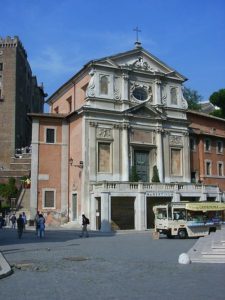
Although named for the earthly father of Jesus, St. Joseph’s Catholic Church sits atop of what remains of the Mamertine Prison. The apostles Peter and Paul are believed to have been imprisoned here, as this was the only prison in Rome in their day. The Upper Chamber was once at street level and would have been where these men spent their final hours before their execution. The dungeon below it is called the Tullianum, named for the spring of water that was evidently accessed even before the founding of Rome. St. Joseph’s continues to serve as a site of worship and one of the important sites to visit in Rome because of its association with the martyrdom of Peter and Paul.
5. Trevi Fountain
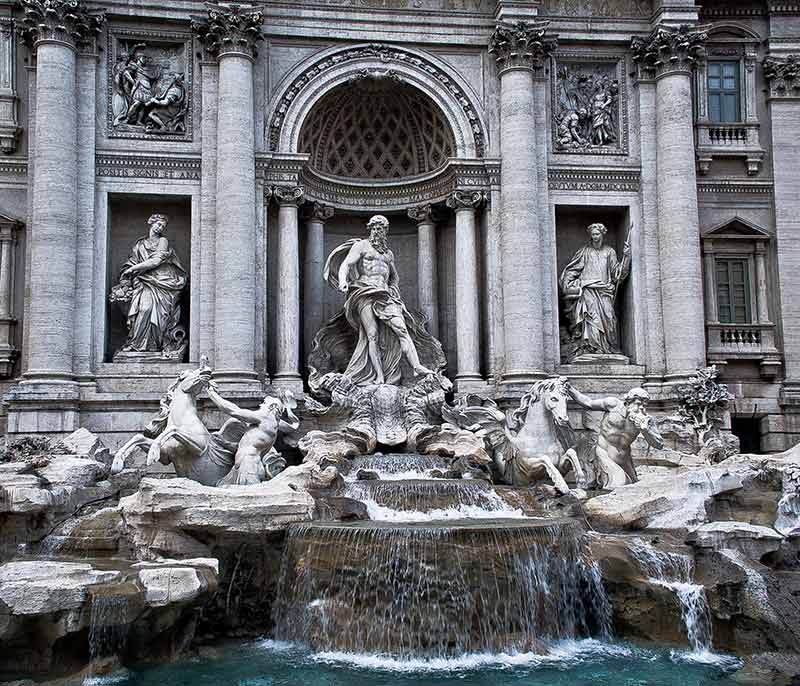
One of the most famous fountains in the world and the largest Baroque fountain in Rome, the Trevi Fountain pinpoints the site of a source of pure water, which was brought into the city via the Aqua Virgo aqueduct in the late part of the first century BC, by authority of Agrippa, the son-in-law of Emperor Augustus. The existing fountain replaced a smaller, 15th-century structure and was completed by Giuseppe Pannini in 1762 with help from other sculptors. However, it was designed three decades earlier by Nicola Salvi, who won a competition for his concept of the fountain’s central triumphal arch, statuary, and rock formations. This water supplies several other fountains, including the Fountain of the Old Boat in front of the Spanish Steps, which lead from the Piazza di Spagna to the French church at the top of the hill.
6. The Pantheon

The best-preserved ancient building in Rome is the Pantheon, which was completed during the reign of Hadrian in about 125 AD. It is often assumed to be a temple of sorts, as first-century historian Pliny records the existence of statues of Venus, Mars, and Julius Caesar inside the Pantheon, but the building may have served more practical imperial functions, as well. The enduring edifice was converted to a church, St. Mary of the Martyrs, in the early seventh century, which may help to explain how it sustained so little damage over the centuries. The white, marble-faced porch was built in a classical Greek style, and eight Corinthian columns bear the now-stark pediment which apparently sported an emblem now lost to the ages. The circular structure of the building is a testimony of the durability of Roman architecture. Its dome is a perfect hemisphere and was once covered with sheets of bronze. Alcoves likely once held the statues described by Pliny. The Pantheon now holds the tombs of Raphael (1483-1520) and members of the Italian monarchy from the 19th and 20th centuries.
7. Basilica of San Clemente
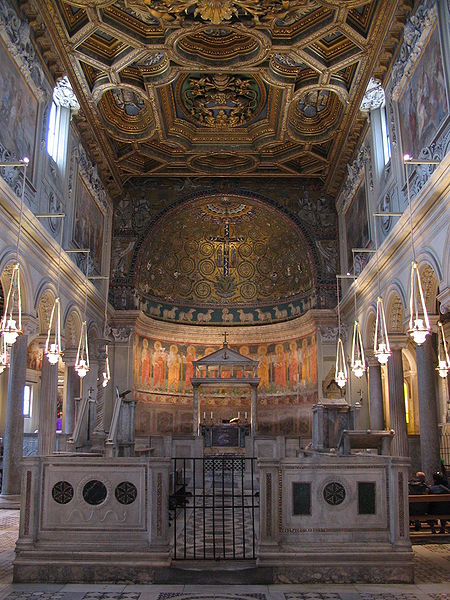
The Christianity of today takes its roots from a darker period: one driven by the fear of persecution. Early Roman churches didn’t take the elegant form we see today; followers of Christianity met and engaged in fellowship in house churches until the Edict of Milan (313 AD) legalized the construction of church buildings. Emperor’s Constantine I and Licinius outlined that there should be religious tolerance in the Roman Empire. Until then, it was left up to the Roman citizens to orchestrate meetings behind the back of the Roman government. One such citizen was Flavius Clemens, San (Saint) Clemente. As one of the first in the Roman senatorial class to convert to Christianity, Clemens took it upon himself to share the word of the Lord, even if that came at the risk of losing not only his senate seat, but also his life.
Today, San Clemente’s boldness is honored by the Basilica di San Clemente in Rome. Featuring vast murals and frescoes in the Basilica itself, this site also features a lower and much less ornate level where early Christians met during the years of persecution. Our participants will travel beneath the Basilica to see the simple surroundings where our brothers and sisters worshipped together in the years immediately following Christ’s crucifixion, which few who visit the Eternal City take the time to see.
More Sites to Visit in Rome with Living Passages Christian Tours
Rome is one of our favorite teaching destinations because visitors rarely get to see the Early Church remnants that exist in and around the city. Even if our guests have been on a Rome tour before, they will be shown sites that are not on any of the normal tour offerings, beyond the sites to visit in Rome in this article. Interested in a Biblical Christian tour? Let us hear from you today!

